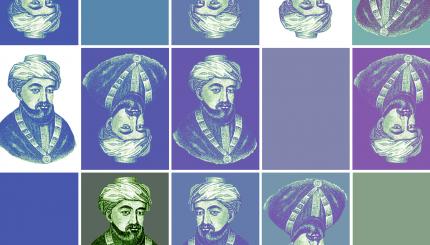Rabbi Israel Meir Kagan was an influential European rabbi and Jewish legal authority better known as the Chofetz Chaim, also the title of his monumental work on the laws of lashon hara, or “evil speech.” His other major work, the Mishnah Berurah, is a commentary on the first section of the Shulchan Aruch, the medieval Jewish law code, and is considered an authoritative work on Jewish law by many Ashkenazi Jews.
Born in 1838 in what is today the western Belarussian town of Dzyatlava, Kagan was orphaned as a child and moved to Vilnius by his mother so he could receive a Jewish education. In his teens, his mother remarried and moved again to the town of Radin, where the Chofetz Chaim would later start a and spend the rest of his life.
Unusually for a rabbinic figure of his prominence, the Chofetz Chaim was not a recognized prodigy in his youth, and some say he didn’t even receive formal rabbinic ordination until much later in life. And while he was widely hailed as the leading Jewish scholar of his generation, he never held a formal title. For much of his life, he supported himself by operating a small grocery with his wife and he grew renowned for operating the business with scrupulous honesty. The stories told of him emphasize not his intellectual brilliance, but his refined moral intuition and his deep humility. Emblematic of these stories is one in which a non-Jewish customer was short-changed a herring, but the customer’s identity was unknown. In response, the Chofetz Chaim for a time gave a free herring to every non-Jewish customer.
The book for which he is best-known was published semi-anonymously in 1873, its title taken from a line in Psalm 34, which reads: “Who is the man who desires life (chofetz chaim), who loves days to see goodness? Guard your tongue from evil and your lips from speaking deceitfully.” The book is credited with elevating an area of Jewish law that had not previously been the subject of extensive study. It remains the authoritative work on the subject to this day.

Help us keep Jewish knowledge accessible to millions of people around the world.
Your donation to My Jewish Learning fuels endless journeys of Jewish discovery. With your help, My Jewish Learning can continue to provide nonstop opportunities for learning, connection and growth.
The Chofetz Chaim was deeply concerned with the plight of Jews around the world. Among his other works are Machaneh Yisrael, a primer for surviving as a Jews in the Russian army, and Nidchei Yisrael, which was aimed at educating Jews living in small Jewish communities in the United States. He was a supporter of education for young girls in the form of Bais Yaakov schools, and was involved in the creation of Agudath Israel, the haredi political movement founded in 1912. In the only video footage of the Chofetz Chaim believed to exist, the then 85-year-old sage can be briefly seen arriving for the first Knessia Gedola, the Agudath’s first congress, held in Vienna in 1923.



